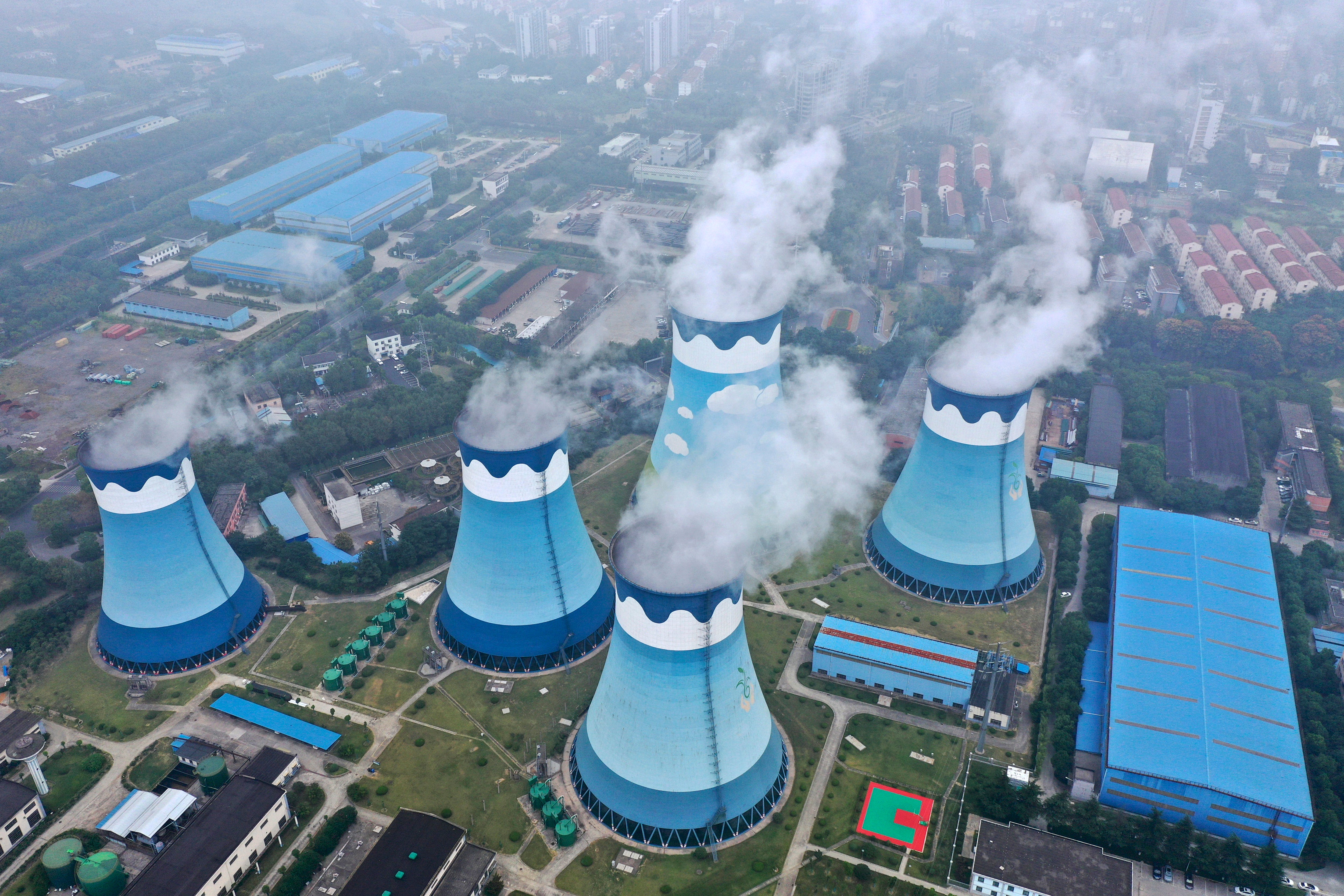China calls for huge boost in coal output to fight power crunch
The proposed increase would make up nearly 3 per cent of China‘s total thermal coal consumption

Your support helps us to tell the story
From reproductive rights to climate change to Big Tech, The Independent is on the ground when the story is developing. Whether it's investigating the financials of Elon Musk's pro-Trump PAC or producing our latest documentary, 'The A Word', which shines a light on the American women fighting for reproductive rights, we know how important it is to parse out the facts from the messaging.
At such a critical moment in US history, we need reporters on the ground. Your donation allows us to keep sending journalists to speak to both sides of the story.
The Independent is trusted by Americans across the entire political spectrum. And unlike many other quality news outlets, we choose not to lock Americans out of our reporting and analysis with paywalls. We believe quality journalism should be available to everyone, paid for by those who can afford it.
Your support makes all the difference.Chinese officials have ordered more than 70 mines in Inner Mongolia to ramp up coal production by nearly 100 million tonnes as the country battles its worst power crunch and coal shortages in years.
The authorities face record-high prices and shortages of electricity that have prompted power rationing across the country, crippling industrial output.
The proposed increase would make up nearly 3 per cent of China‘s total thermal coal consumption.
In an urgent notice dated 7 October, the Inner Mongolia regional energy department asked the cities of Wuhai, Ordos and Hulunbuir, as well as Xilingol League, or prefecture, to notify 72 mines that they may operate at stipulated higher capacities immediately, provided they ensure safe production.
An official with the region’s energy bureau confirmed the notice but declined to say how long the production boost would be allowed to last.
The notice followed a meeting on the same day during which the regional authorities mapped out measures for winter energy supplies in response to mandates from China‘s State Council, or Cabinet, the state-run Inner Mongolia Daily reported on Friday.
“The (government’s) coal task force shall urge miners to raise output with no compromise, while the power task team shall have the generating firms guarantee meeting the winter electricity and heating demand,” the newspaper said.
“This demonstrates the government is serious about raising local coal production to ease the shortage,” said a Beijing-based trader, who estimated the production boost may take up to two to three months to materialise.
The 72 mines listed by the Inner Mongolia energy bureau, most of which are open pits, previously had authorised annual capacity of 178.45 million tonnes.
The notice proposed they increase their production capacity by 98.35 million tonnes combined, according to Reuters calculations.
“It will help alleviate the coal shortage but cannot eliminate the issue,” said Lara Dong, senior director with IHS Markit.
“The government will still need to apply power rationing to ensure the balancing of the coal and power markets over the winter,” she said.
Inner Mongolia is China‘s second-biggest coal-producing region, churning out just over 1 billion tonnes in 2020 and accounting for more than a quarter of the national total, official data shows.
However, that output was down 8 per cent in 2020 and was falling every month from April through July this year, partly due to an anti-corruption probe initiated last year by Beijing targeting the coal sector, which led to lower production as miners were banned from producing above approved capacity.
Neighbouring Shanxi province, China‘s biggest coal region, had to close 27 coal mines this week due to flooding.
Coal inventories at major Chinese ports were at 52.34 million tonnes in late September before a week-long national holiday that started Oct 1, down 18 per cent from the same period last year, data compiled by China Coal Transportation and Distribution Association showed.
Meanwhile, coal consumption is climbing as northeastern China has kicked off the winter heating season, with major power plants having stockpiles for around 10 days of use, down from more than 20 days last year.
To ensure power and heating supply to residential users, China has reopened dozens of other mines and approved several new ones.
The government has also called for “appropriately” raising coal imports to levels on par with last year, analysts said, after imports fell nearly 10% in the first eight months.
It has even released Australian coal from bonded storage despite a nearly year-long unofficial import ban on coal imports from Australia, and utilities have tapped rare supply sources like Kazakhstan and the United States.
Extra production in Inner Mongolia should help ease China‘s supply crunch but even an annual 98 million tonnes may not add much before winter hits, analysts and traders said.
Analysts from Guosheng Securities expect China‘s thermal coal shortage to top 116 million tonnes in 2021, despite some 31 million tonnes in newly approved capacity gradually coming online from the fourth quarter.
“More (announcements to boost coal output) will be needed and we expect it to come,” said James Stevenson, coal analyst from consultancy IHS Markit, adding that China has used all its main tools to push domestic supply and manage demand.
Benchmark spot thermal coal prices in the northern port of Qinhuangdao hit a record high of 1,079 yuan a tonne in late September.
As coal prices continue to rise, more power plants are seeing their balance sheets fall into the red and even face shutting down.
“Many more people and businesses would have been sitting in the dark had China just built coal power plants and not expanded solar and wind capacity,” said Lauri Myllyvirta, lead analyst at the Centre for Research on Energy and Clean Air, noting volatile fossil fuel prices have caused shortages, not the replacement of fossil fuels with renewables.
Join our commenting forum
Join thought-provoking conversations, follow other Independent readers and see their replies
Comments